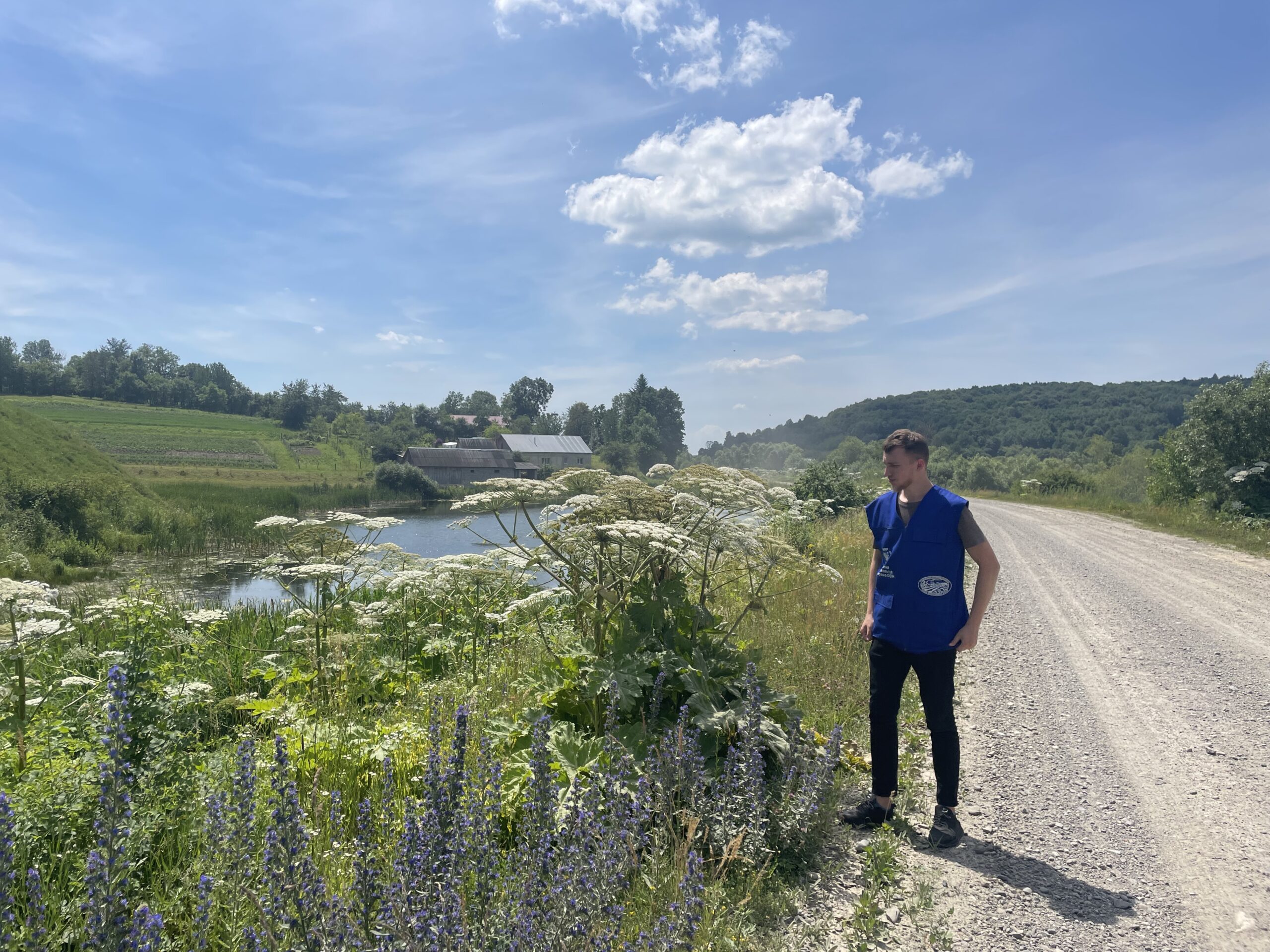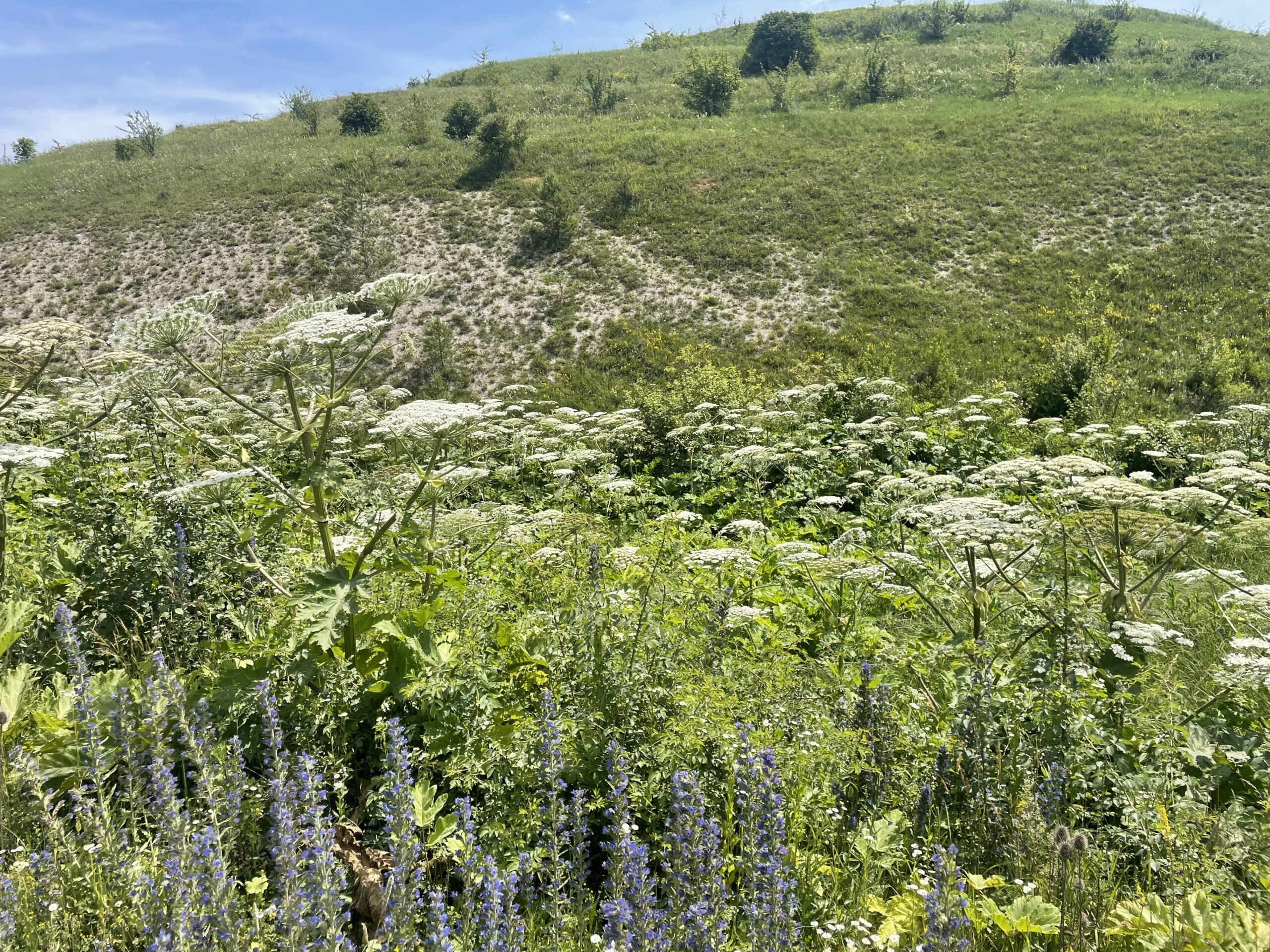The last environmental project entitled “Protecting the biodiversity of cross-border territories of Ukraine and Poland from invasive hogweed (Heracleum) populations” (acronym: ZeroHeracleum) has been signed. It is jointly developed by Lviv Agrarian Chamber, Stepan Gzhytskyi National University of Veterinary Medicine and Biotechnologies of Lviv, Maria Curie-Skłodowska University in Lublin, University of Life Sciences in Lublin and Lublin Chamber of Agriculture. The project sets an ambitious goal to stop the spread of one of the most dangerous invasive plant species in Europe – Sosnowsky’s hogweed (Heracleum sosnowskyi).
Hogweed isn’t just a botanical nuisance – It’s a serious threat to both the environment and public health. Originally brought from the Caucasus to Russia in the 1940s as a high-yield animal fodder plant, it was widely cultivated across Eastern Europe, including Ukraine and Poland. Unfortunately, what was once seen as a valuable agricultural asset quickly turned into an uncontrollable and toxic invader. In Poland, the hogweed was introduced in the 1950s and actively cultivated until the 1980s. Since then, it has spread rapidly. In Ukraine, its presence is also growing, particularly along river valleys and disturbed rural areas.
Sosnowsky’s hogweed produces massive amounts of seeds – up to 20,000 per plant – that are easily spread by wind, water, and even human activity. The plant thrives in disturbed areas such as roadsides, abandoned fields, and riverbanks. Because of its rapid spread and harmful impact, it’s now recognized by the European Union as one of the top 14 invasive species of concern.
Its dangers extend beyond ecology. The plant’s sap contains toxic chemicals called furanocoumarins, which react with sunlight and can cause severe skin burns and long-term scarring. Its towering size, aggressive growth, and resilience make it extremely difficult to eradicate once established.
The ZeroHeracleum project involves a comprehensive approach, i.e. early detection, mapping of infested areas, development of an interactive GIS mobile application, and the physical removal of hogweed. It also includes scientific research on the plant’s genetic and biochemical data, its dependence on environmental conditions for growth, and the identification of antagonist plants that suppress hogweed growth. These measures aim to find effective methods for localising and eradicating hogweed, monitoring its spread, and restoring natural biodiversity in cleared areas.
This project is an answer on a threat, which knows no borders. At the same time, it should also demonstrate that only joint cross-border solutions, based on a scientific approach and community involvement, can stop and prevent the damage.
The total value of the project is 1 676 036.47 EUR, including the Programme’s co-funding of 1 508 432.82 EUR. The total duration of the project’s implementation is 24 months. More information about the project can be found here




